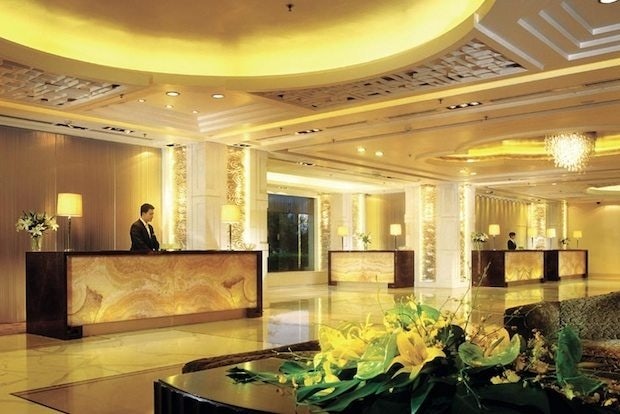
The Shangri-La Beijing lobby. (Shangri-La)
In China, paying more for high-end services certainly pays off. Out of all the foreign and domestic companies currently serving customers in the China market, the two considered by Chinese consumers to have the best customer service hail from—naturally—the luxury industry.
Hoteliers Hilton and Shangri-La gained the top honors in business research firm Forrester’s Customer Experience Index for China, a survey which asked 4,500 online urban Chinese consumers about their experience with firms in 46 different industries. Both hotels earned top spots in all the components featured on the survey, including the factors of “meeting needs, being easy to do business with, and being enjoyable to do business with."
Hilton edged out Shangri-La by a mere two points for the top spot. Along with these hotels, non-mainland hotel chains dominated the hospitality industry among respondents, taking the top five places for the hotel industry. Although it came in second overall, Shangri-La edged out Hilton in the “meeting needs” category.
Another trend the luxury industry should take note of is Chinese consumers' love for e-commerce. As online shopping becomes increasingly popular in China, e-tail outlet Tmall earned third place on the list. Furthermore, four out of the five retailers with the overall highest scores were exclusively online. The only retailer of the five with a brick-and-mortar presence—Ikea—also features e-commerce options.
Overall, Chinese consumers are satisfied with their experiences with companies. The majority rated their experiences across the board as “good”, while “OK” came in second and “excellent” third. Unsurprisingly, high-income groups able to afford luxury experiences enjoyed their favorite companies 14 points more than middle-income respondents, according to the report. Meanwhile, consumers classified as “technology optimists” rated companies up to 36 points higher than “technology pessimists”.
The main challenge for brands in China is now to stand out from their peers by moving from the “good” to “excellent” category. The report lists several pieces of advice on how this can be accomplished by a business in any industry. First, companies should create a “voice of the customer” (VoC) program in order to better understand their Chinese customers’ needs. In addition, they must manage a portfolio of customer experience improvement projects as a result of these needs. Finally, these two factors can help a brand define a set customer experience strategy.